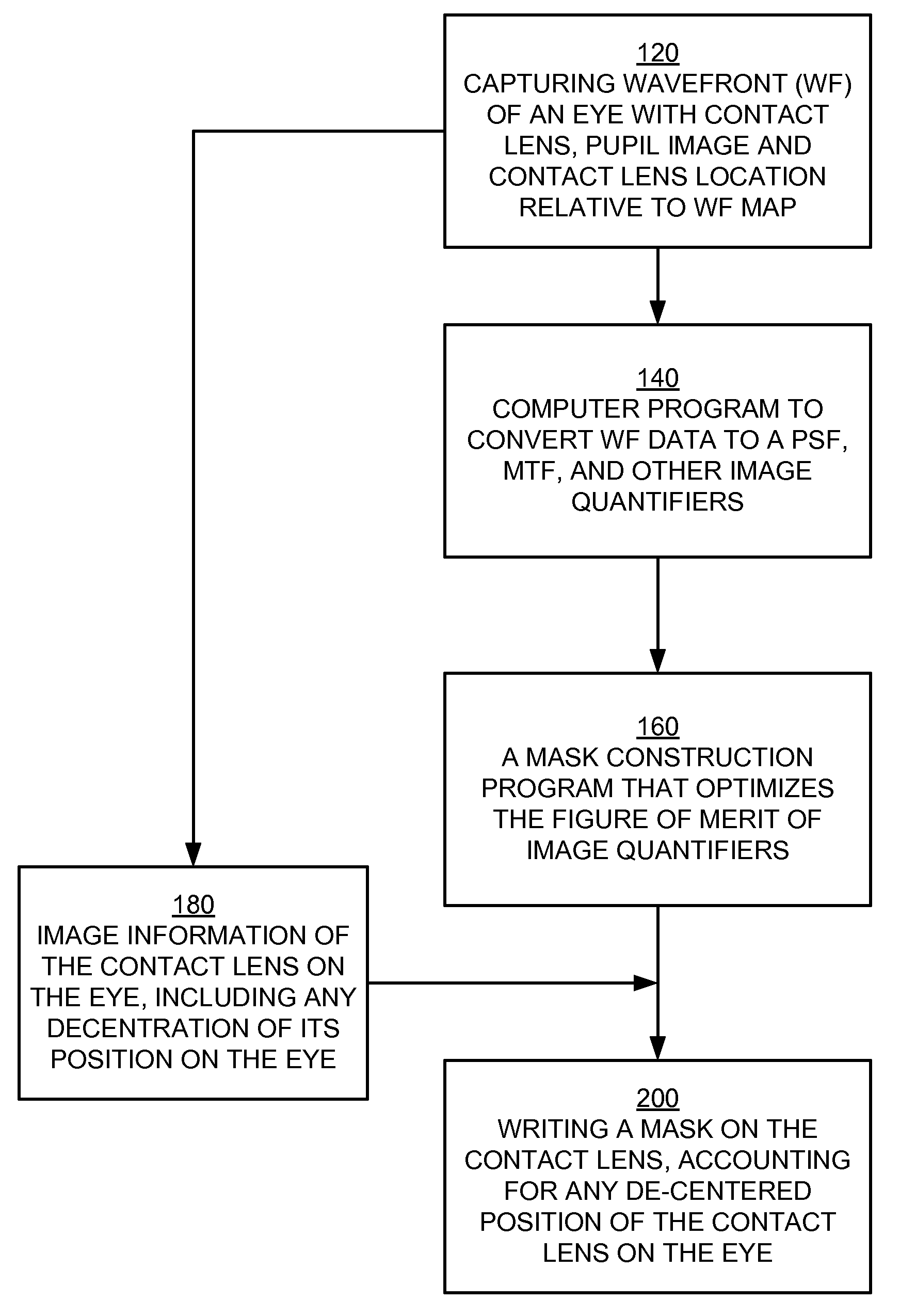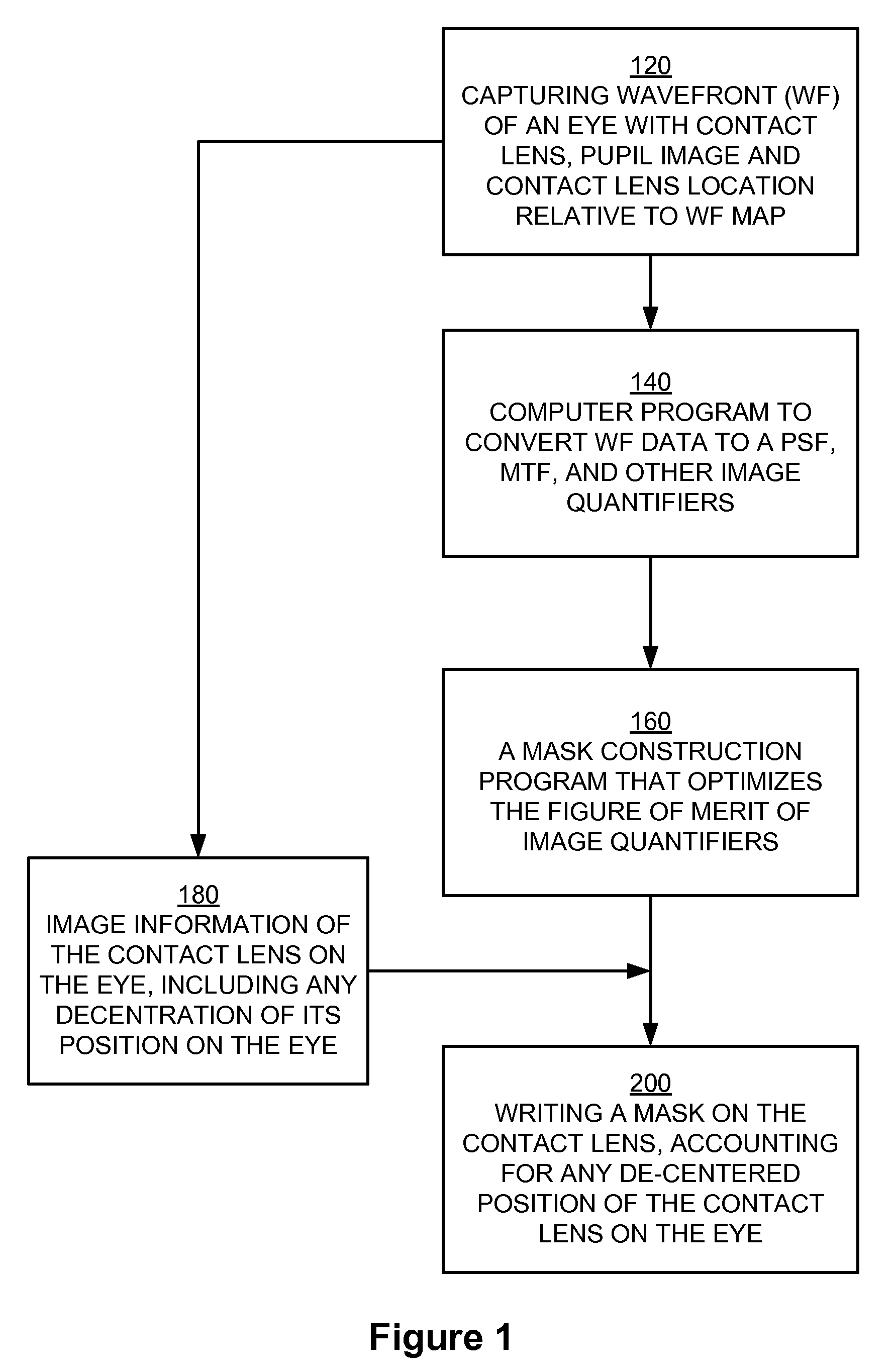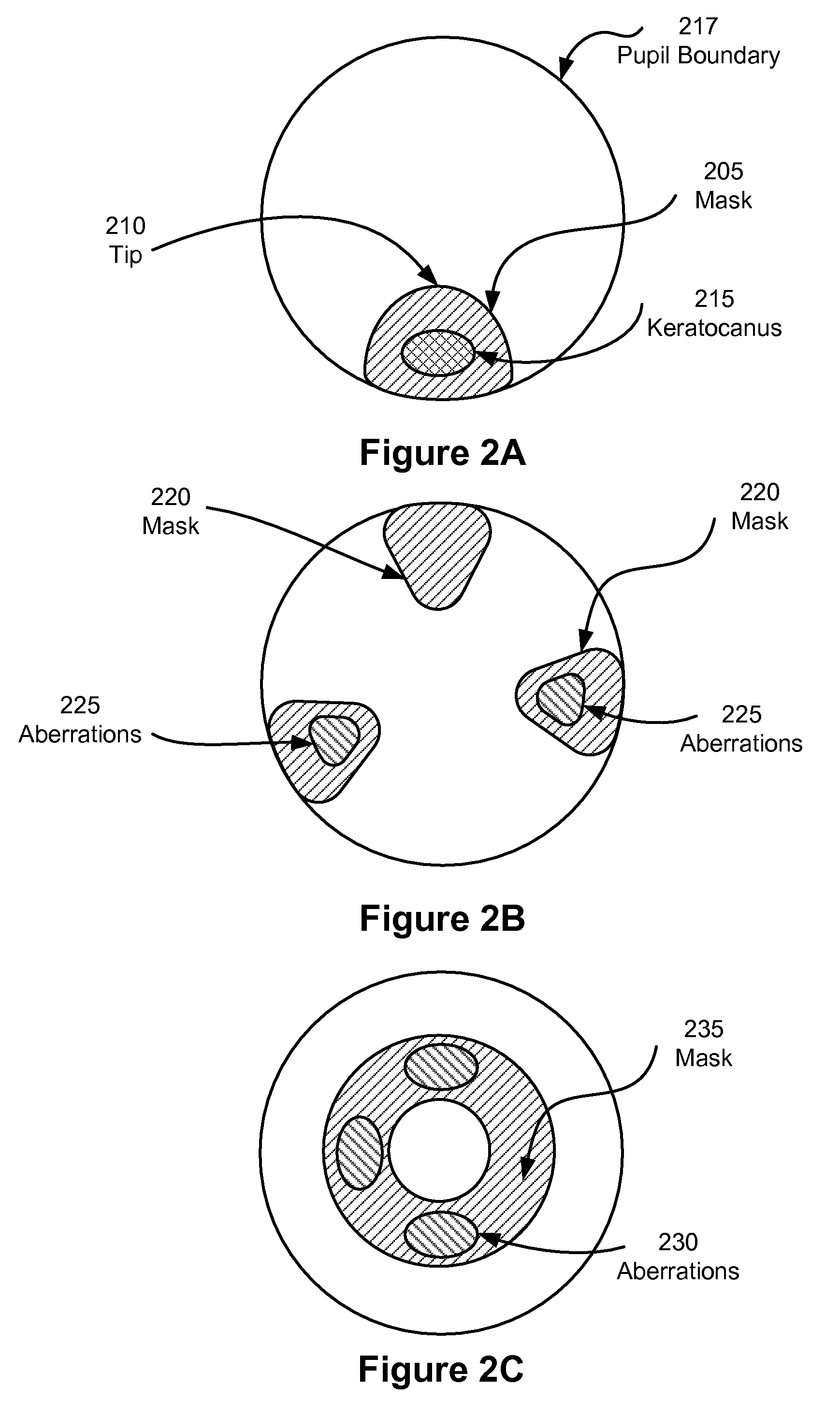Customized contact lenses for reducing aberrations of the eye
a technology of aberrations and contact lenses, applied in the field of customized contact lenses for reducing aberrations of the eye, can solve the problems of significantly deteriorating vision quality, poor optical quality, and much more severe aberrations, and achieve the effect of improving the quality of vision of the ey
- Summary
- Abstract
- Description
- Claims
- Application Information
AI Technical Summary
Benefits of technology
Problems solved by technology
Method used
Image
Examples
Embodiment Construction
[0024]Techniques and embodiments are described below wherein wavefront aberrations of the eye are reduced. Wavefront aberrations of the eye are first measured using a wavefront aberrometer, which is for example commercially available from Ophthonix, Wavefront Sciences, Visx, or Bausch and Lomb.
QUALITY OF VISION METRIC
[0025]The quality of vision can be assessed using this wavefront (WF) information or the WF map. A number of quantifiers can be used as a measure of quality of vision. Point Spread Function (PSF) of the WF map is a good measure. The tightness of the light distribution of a point image indicates the “goodness” of the optics of the eye.
[0026]A figure of merit or a quality of vision metric can be constructed as illustrated in the following. In one embodiment, it is a quantity relating to the tightness of the PSF, an area of a circle centered at the peak of the PSF that encircles 85% of the light intensity. The 85% value is arbitrary, other values can also can be used as a ...
PUM
 Login to View More
Login to View More Abstract
Description
Claims
Application Information
 Login to View More
Login to View More - R&D
- Intellectual Property
- Life Sciences
- Materials
- Tech Scout
- Unparalleled Data Quality
- Higher Quality Content
- 60% Fewer Hallucinations
Browse by: Latest US Patents, China's latest patents, Technical Efficacy Thesaurus, Application Domain, Technology Topic, Popular Technical Reports.
© 2025 PatSnap. All rights reserved.Legal|Privacy policy|Modern Slavery Act Transparency Statement|Sitemap|About US| Contact US: help@patsnap.com



